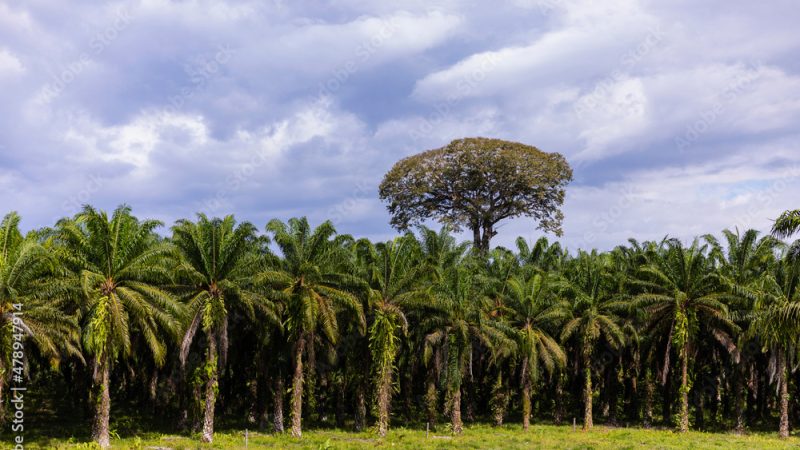Palm trees in Costa Rica are more than just a tropical icon—they’re a symbol of the country’s breathtaking biodiversity and lush landscapes. Whether swaying over white-sand beaches or growing wild in the rainforest, palm trees add a distinctive charm to every environment. Costa Rica is home to over 90 species of native palms, and spotting them is a must-do experience for nature lovers and travelers alike. From coastal retreats to deep jungle hideaways, there are unforgettable locations where palm trees dominate the scenery. Here are 10 places where you can enjoy the beauty and diversity of palm trees in Costa Rica.
Manuel Antonio National Park: Where Palms Meet Wildlife
Manuel Antonio National Park is a gem where dense jungle, pristine beaches, and iconic palm trees coexist. Towering coconut palms fringe the sandy shores, offering postcard-perfect views. The lush environment is ideal for spotting monkeys swinging between palms or sloths lounging in the branches. It’s one of the most picturesque and biodiverse spots to see palm trees in Costa Rica. Don’t forget your camera—this park offers both serenity and adventure.
Tamarindo Beach: Surf, Sun, and Palms
Tamarindo Beach on the Pacific Coast is famous for its surf culture and stunning sunsets, all framed by clusters of palm trees. These tropical trees provide much-needed shade as you relax on the golden sands. You’ll often find locals and tourists napping in hammocks tied between two sturdy palms. Watching the sun dip below the horizon with palm silhouettes in the foreground is a truly memorable sight. Tamarindo perfectly captures the magic of palm trees in Costa Rica.
Corcovado National Park: Jungle Palms in the Wild
Corcovado National Park is one of the most biologically intense places on Earth and a sanctuary for numerous palm species. These palms thrive in the park’s untouched rainforest, reaching impressive heights. Trekking through Corcovado reveals rare species like the Cryosophila warscewiczii, native to the region. Wildlife and palms blend seamlessly, creating a prehistoric atmosphere. This is a must-visit for any explorer fascinated by palm trees in Costa Rica.
Puerto Viejo de Talamanca: Caribbean Palms and Culture
Puerto Viejo on the Caribbean coast combines Afro-Caribbean culture with natural beauty, including plenty of swaying palms. Coconut palms dominate the coastline, offering natural shade to beachgoers. The laid-back vibe, reggae music, and tropical greenery make it a paradise for palm lovers. Try a fresh coconut water straight from the source—it’s part of the experience. Puerto Viejo’s relaxed charm is inseparable from the presence of palm trees in Costa Rica.
Santa Teresa: Remote Beauty with Endless Palms
Santa Teresa is a hidden gem known for its laid-back atmosphere, surf-friendly waves, and scenic palm-lined beaches. It’s a fantastic spot for watching sunsets framed by rows of elegant palms. These trees also serve as perches for parrots and other birds, adding sound to the scenery. Yoga sessions and beachfront dinners often take place under the palms here. Santa Teresa epitomizes the tranquil experience of seeing palm trees in Costa Rica.
Osa Peninsula: Palms in a Pristine Ecosystem
The Osa Peninsula offers one of the richest ecosystems in Central America, and palms flourish in its untouched terrain. Here you’ll find unique species like Attalea rostrata and the towering Socratea exorrhiza. Guided hikes reveal hidden palm groves nestled deep in the jungle. Many lodges use local palm fronds for traditional roofing, showcasing their cultural and ecological value. Exploring the Osa Peninsula reveals the deeper significance of palm trees in Costa Rica.
Playa Flamingo: Luxury Among Palms
Playa Flamingo is a luxurious beach destination where elegant resorts and beautiful palm trees coalesce. The area is known for its pink-hued sand and rows of swaying coconut palms. It’s a favorite location for weddings and romantic getaways due to its stunning natural backdrop. Palms here are meticulously maintained, enhancing the beach’s tropical aesthetic. Playa Flamingo showcases the upscale side of palm trees in Costa Rica.
Cahuita National Park: Palms and Coral Reefs
Cahuita National Park offers the best of land and sea, with palm-lined trails and vibrant coral reefs just offshore. Walking along the park’s coastal path, you’ll be shaded by towering palms and entertained by capuchin monkeys. The proximity of the jungle to the beach creates an immersive nature experience. Palm trees provide crucial habitat for both land and marine species here. Cahuita is a brilliant display of how vital palm trees in Costa Rica are to local ecosystems.
Drake Bay: Off-the-Beaten-Path Palm Paradise
Accessible only by boat or small plane, Drake Bay is an isolated paradise dotted with lush palm trees. These palms dominate the rugged coastlines and rainforest edges, giving the area a raw, untouched vibe. It’s ideal for eco-tourists and birdwatchers who want to see palm-dwelling species up close. The peacefulness of the bay makes the palms stand out even more. Drake Bay is a truly intimate way to experience palm trees in Costa Rica.
Nicoya Peninsula: Blue Zones and Palm Life
The Nicoya Peninsula is one of the world’s Blue Zones—areas where people live exceptionally long lives. Palm trees grow abundantly in this health-conscious, relaxed environment. Locals often use palm products in traditional diets and homes, from coconut oil to palm-leaf roofs. The palm-lined beaches here invite long walks and slow living. Visiting Nicoya offers a holistic appreciation for how palm trees in Costa Rica contribute to well-being.
Conclusion
Whether you’re hiking through a rainforest or lounging on a tranquil beach, palm trees in Costa Rica are ever-present. They are more than just scenic—they are vital to the local environment, culture, and tourism. Each location offers a different lens through which to admire their beauty, from wild jungles to chic resorts. The diversity of palms across Costa Rica reflects the country’s natural richness. No visit to Costa Rica is complete without pausing to admire these tropical giants.
FAQs
Q1. What types of palm trees are found in Costa Rica?
Costa Rica is home to over 90 native species of palm trees, including coconut palms, Cryosophila, Attalea, and Socratea species, among many others.
Q2. Are palm trees in Costa Rica safe to touch or climb?
While many palm trees are harmless, some have spiny trunks or host insects, so it’s best to admire them without physical contact unless guided by a professional.
Q3. Can I eat coconuts from palm trees in Costa Rica?
Yes, coconuts from local palm trees are often safe and enjoyed fresh. Vendors commonly sell them chilled as “pipa fria” at beaches and tourist spots.
Q4. Do palm trees grow in the rainforest or just near beaches?
Palm trees in Costa Rica thrive in both rainforests and coastal areas, with different species adapted to each environment, including very tall rainforest palms.
Q5. When is the best time to see palm trees in full bloom?
Palm trees don’t have a single blooming season like other plants. However, the dry season from December to April offers the best conditions for viewing.
Also read:









